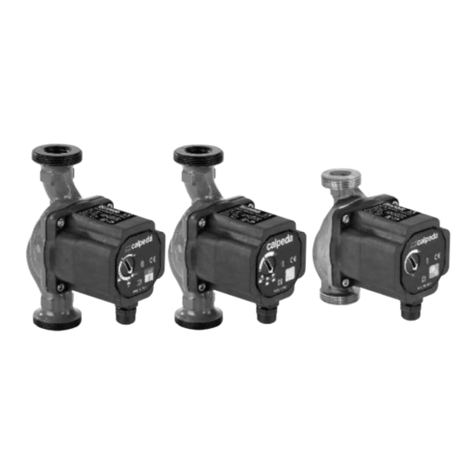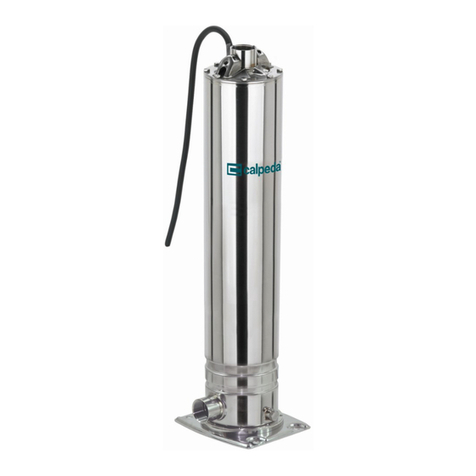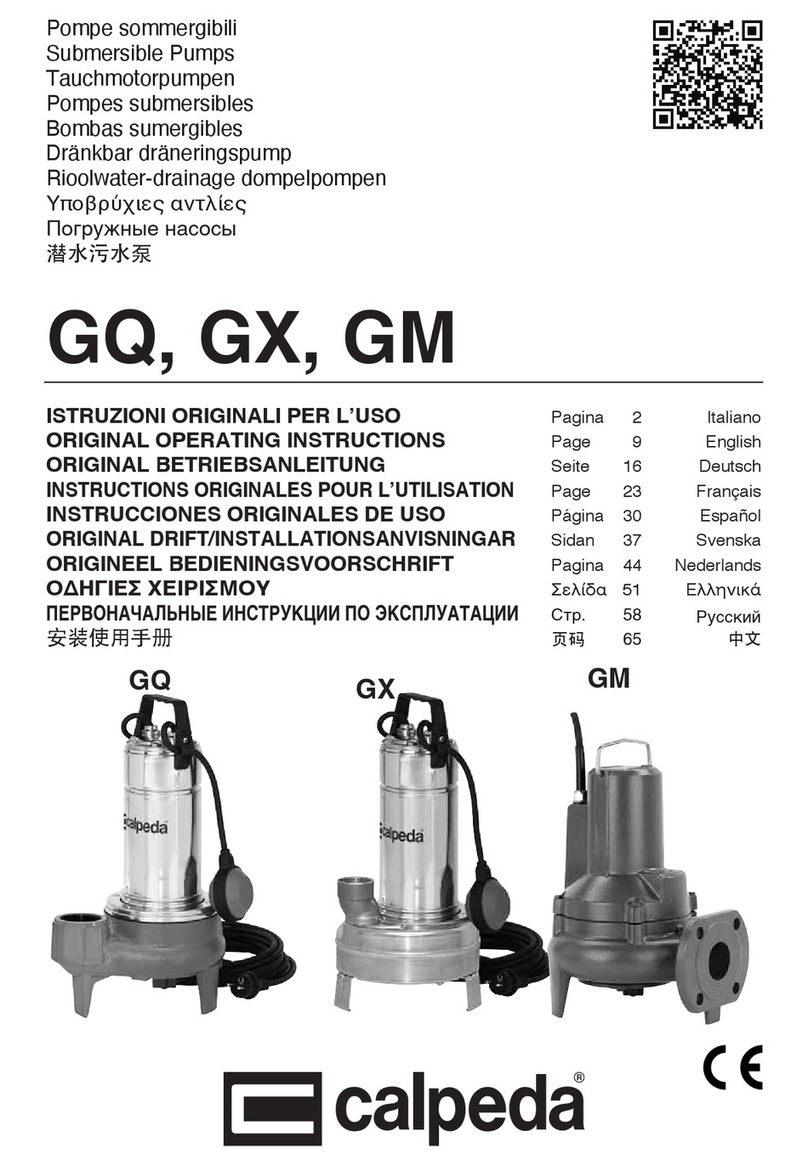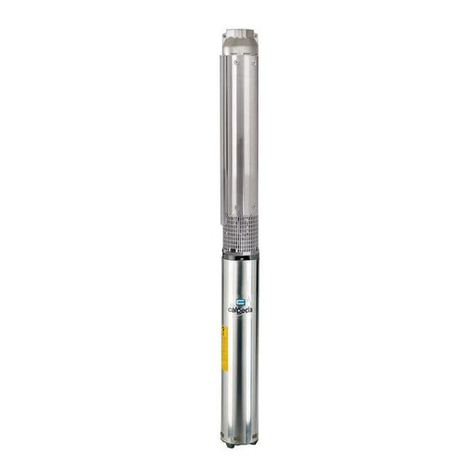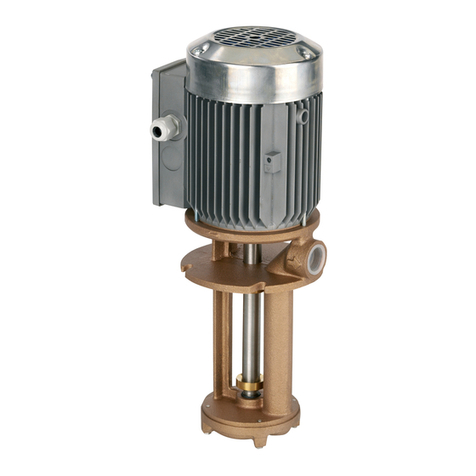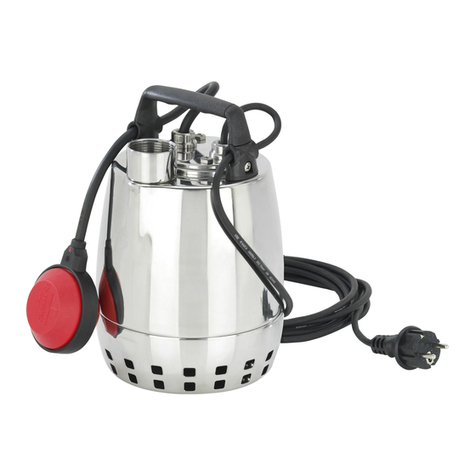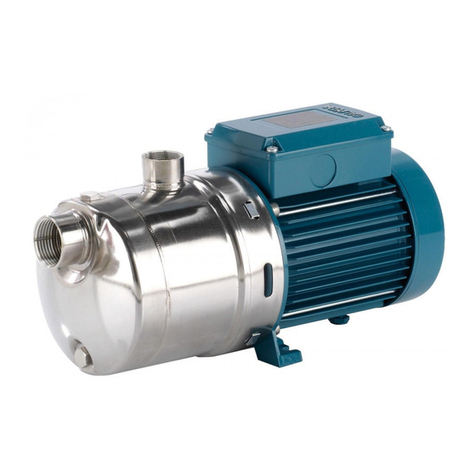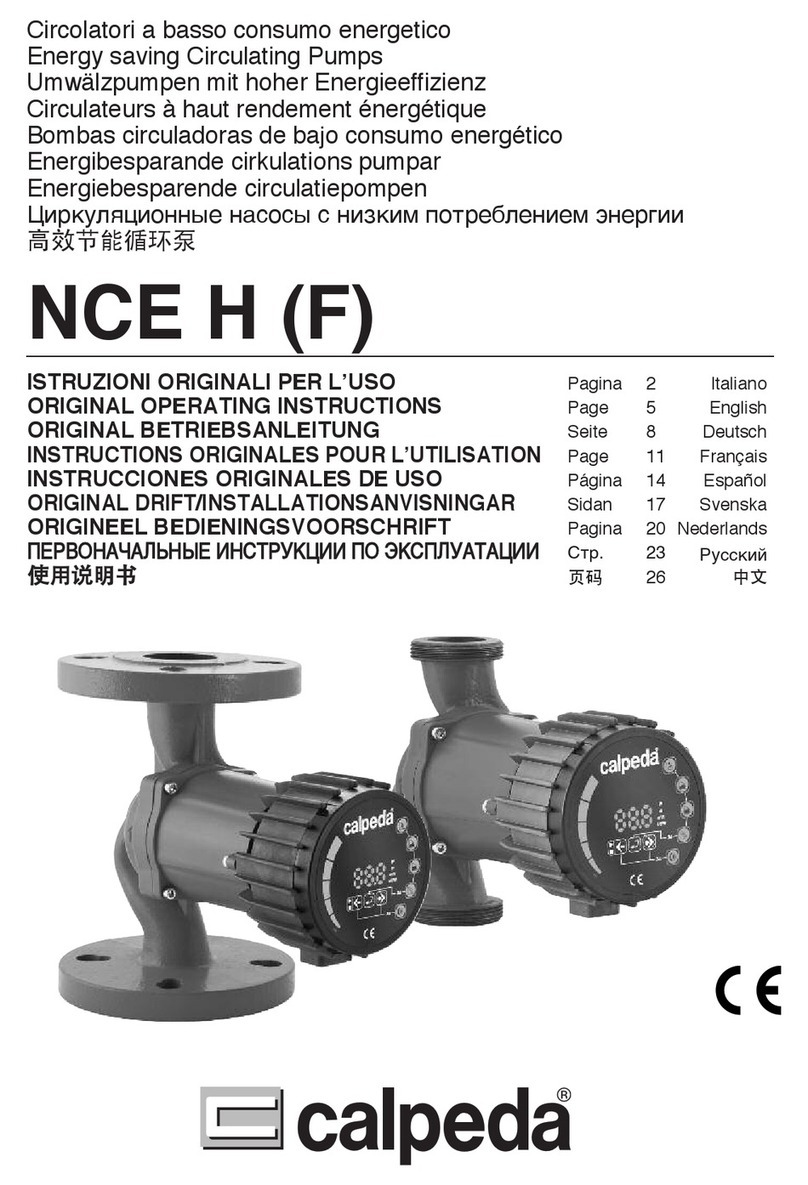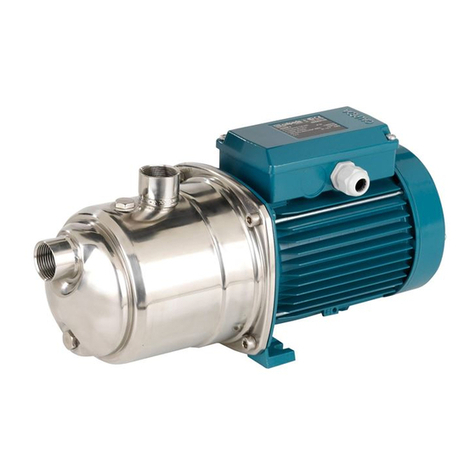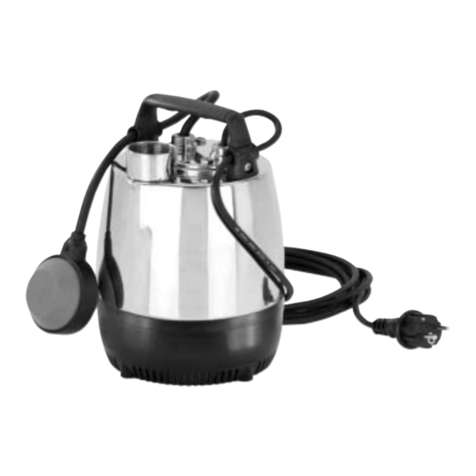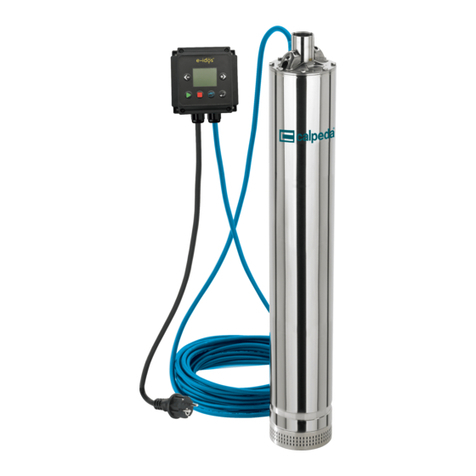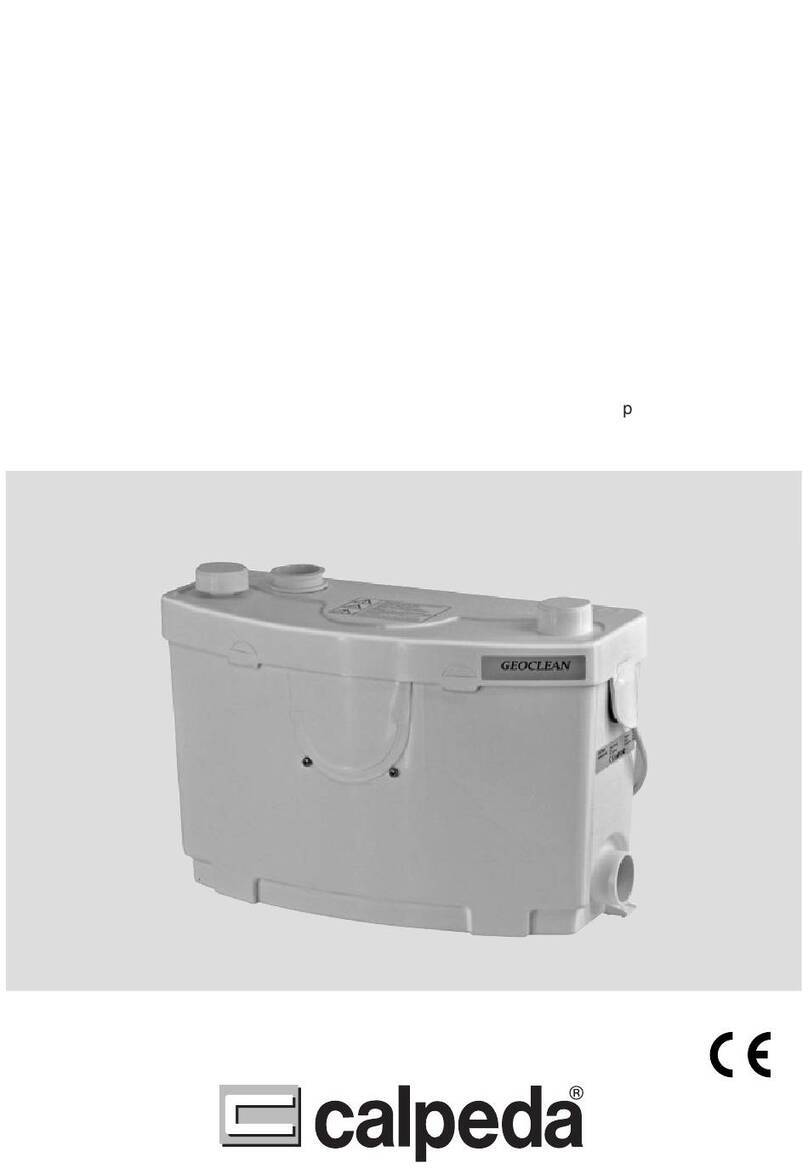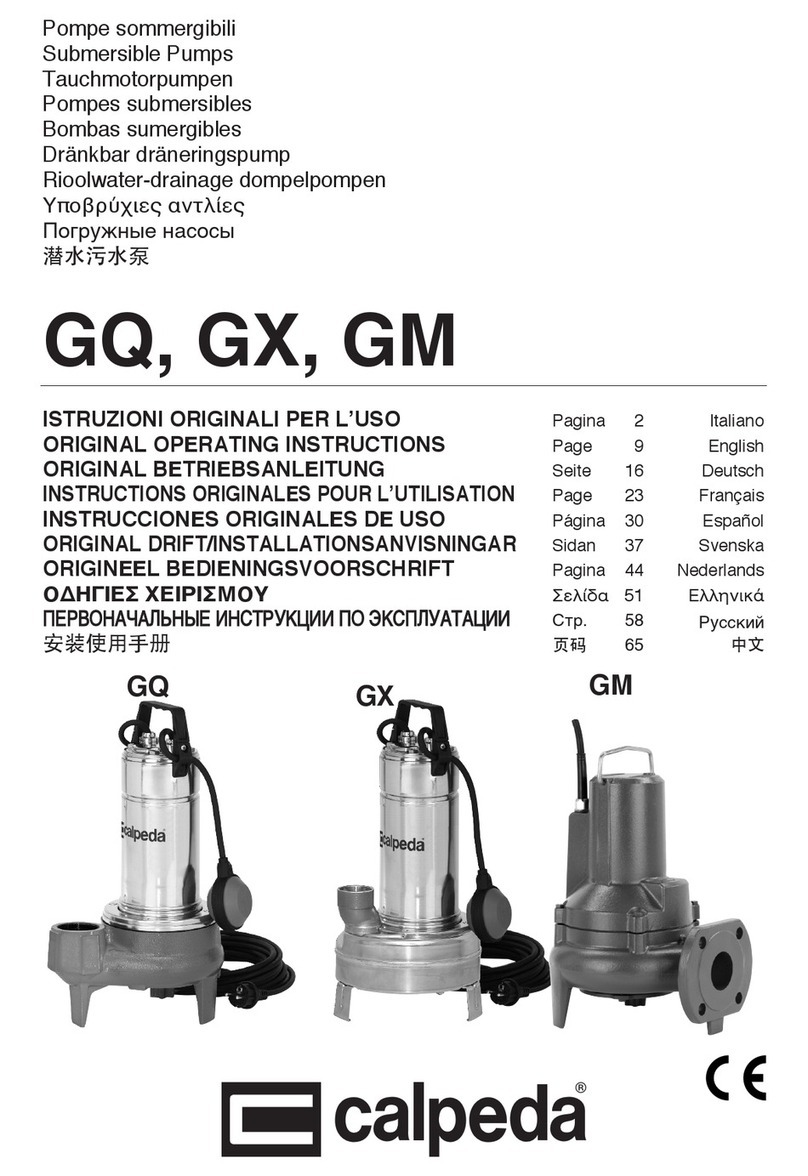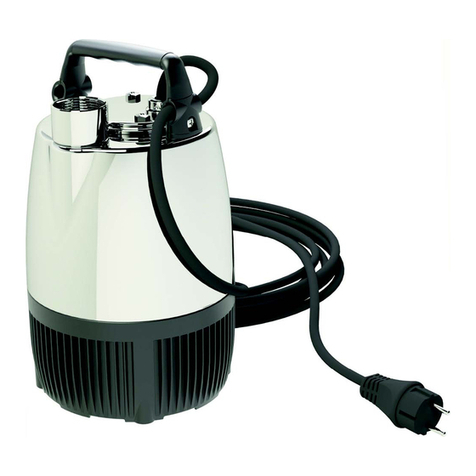
IT
SPA Rev7 - Istruzioni originali Pagina 5 / 28
Eseguire il collegamento a terra. Collegare il
conduttore di protezione al morsetto contrassegnato
con il simbolo .
Confrontare la frequenza e la tensione di rete con i
dati di targa e collegare i conduttori di alimentazione
ai morsetti secondo il corrispondente schema riportato
all’interno del coperchio della scatola morsetti.
ATTENZIONE: non fare mai cadere una
rondella o altre parti metalliche nel
passaggio cavi interno tra scatola morsetti
e statore. Se accade, smontare il motore e
recuperare la parte caduta.
Il cavo di alimentazione essibile deve essere
almeno del tipo H05 RN-F oppure H05 VV-F. Per le
vasche o minipiscine installate all’esterno il cavo di
alimentazione deve essere almeno del tipo H07 RN-F
con sezione del cavo pari o superiore (cap. 12.5 TAB 1)
..
Tutti i componenti elettrici devono essere collocati
fuori della portata di mano delle persone che usano la
vasca e devono essere collocati o ssati in modo tale
che non possano cadere nella vasca.
Eseguire i collegamenti equipotenziali.
Collegare ad un circuito protetto da interruttore
differenziale con I∆N ≤ 30 mA.
Installare un dispositivo per la onnipolare
disinserzione dalla rete (interruttore per scollegare
la pompa dall’alimentazione) con una distanza di
apertura dei contatti di almeno 3 mm.
Con alimentazione trifase installare un adeguato
salvamotore con curva D come da corrente di targa.
Le elettropompe monofasi SPAM, sono fornite con
condensatore collegato ai morsetti e (per 220-240 V -
50 Hz) con termoprotettore inserito.
7. AVVIO E IMPIEGO
7.1. Controlli prima dell’accensione
L’apparecchio non deve essere messo infunzione in
presenza di parti danneggiate.
7.2. Primo avviamento
OFF
ATTENZIONE: evitare assolutamente il
funzionamento a secco, neanche per prova.
Avviare la pompa dopo il riempimento della vasca.
Arrestare la pompa prima dello svuotamento della
vasca.
Per evitare danni alla pompa a causa di funzionamento
prolungato a secco, prevedere/assicurarsi che
l’impianto sia dotato di sonde o sensore di livello per
impedire l’avviamento e per l’arresto automatico nel
caso di mancanza d’acqua nella vasca o timer contro il
funzionamento accidentale prolungato.
Al primo avviamento o dopo una lunga inattività,
controllare che l’albero giri a mano. Per questo scopo
le elettropompe hanno un intaglio per cacciavite
sull’estremità albero lato ventilazione.
Ruotare solo nel senso indicato dalle frecce sul corpo
pompa. Deve risultare una normale leggera resistenza
alla rotazione dovuta all’attrito della tenuta meccanica.
La pompa potrebbe essere bloccata da ostruzioni,
impurità, incollatura delle facce della tenuta meccanica
o per altre cause.
Se l’albero non si sblocca a mano occorre smontare la
pompa e pulirla.
Con alimentazione trifase vericare il senso di rotazione.
Non avviare il motore se l’albero risulta bloccato. La
girante potrebbe svitarsi se bloccata e se in questa
condizione il motore si avvia con senso di rotazione
inverso. La rotazione inversa è dannosa anche per la
tenuta meccanica.
Avviare per pochi giri il motore e controllare che il
senso di rotazione corrisponda a quello indicato dalle
frecce sul corpo pompa: orario guardando il motore dal
lato ventola.
In caso contrario togliere l’alimentazione elettrica e
invertire fra loro i collegamenti di due fasi.
Non lasciare mai cadere o introdurre oggetti su
qualsiasi apertura.
Non fare mai funzionare la pompa senza ltro di
protezione sull’apertura di aspirazione.
7.3. SPEGNIMENTO
ON
L’apparecchio deve essere spento in ogni caso
in cui vi fossero anomalie di funzionamento.
(vedi ricerca guasti).
Il prodotto è progettato per un funzionamento continuo,
lo spegnimento avviene solamente scollegando
l’alimentazione mediante i previsti sistemi di sgancio
(vedi par. “6.5 Collegamento elettrico”).
8. MANUTENZIONE
Prima di ogni intervento è obbligatorio mettere
l’apparecchio fuori servizio scollegando ogni fonte di
energia.
Se necessario rivolgersi ad elettricista o tecnico
esperto.
Ogni operazione di manutenzione, pulizia o
riparazione effettuata con l’impianto elettrico
sotto tensione, può causare gravi incidenti,
anche mortali, alle persone.
Se il cavo di alimentazione è danneggiato, esso
deve essere sostituito dal costruttore o dal suo
servizio assistenza tecnica o comunque da
una persona con qualica similare, in modo da
prevenire ogni rischio.
Nel caso di manutenzioni straordinarie, o di interventi
di manutenzione che necessitano lo smontaggio di
parti dell’apparecchio, il manutentore deve essere un
tecnico qualicato in grado di leggere e comprendere
schemi e disegni.
È opportuno tenere un registro di tutti gli interventi
effettuati.
Durante la manutenzione deve essere
posta particolare attenzione al ne di evitare
l’introduzione o l’immissione in circuito di
corpi estranei, anche di piccole dimensioni,
che possano causare un malfunzionamento e
compromettere la sicurezza dell’apparecchio.
Evitare di eseguire qualsiasi operazione a mani
nude. Utilizzare i guanti anti taglio, e resistenti
all’acqua, per lo smontaggio e la pulizia del
ltro o in altri particolari dove si rendessero
necessari.
Durante le operazioni di manutenzione non
deve essere presente personale estraneo.
Le operazioni di manutenzione non descritte in questo
manuale devono essere eseguite solamente da
personale specializzato inviato dalla CALPEDA S.p.A..
Per ulteriore informazioni tecniche riguardanti l’utilizzo
o la manutenzione dell’apparecchio, contattare
CALPEDA S.p.A..
8.1. Manutenzione ordinaria
OFF
Prima di ogni intervento di manutenzione
togliere l’alimentazione elettrica e assicurarsi
che la pompa non rischi di essere messa sotto
tensione per inavvertenza.
SPA Rev7.indd 5 08/02/19 17:46
